There’s no better way to explore the rich cultural heritage of Delhi than by visiting its fascinating museums. These Museums in Delhi with Artifacts in Delhi house a myriad of artifacts that tell the story of India’s past, showcasing everything from ancient relics to contemporary art. In this list, you’ll discover the top 10 museums in Delhi where you can immerse yourself in history, admire awe-inspiring collections, and gain a deeper understanding of your cultural roots. Each museum promises a unique experience, making them must-visit destinations for curious minds.
Delhi, the capital city of India, stands as a testament to the country’s diverse and intricate history. Spanning over several millennia, it has been the epicenter of numerous empires, each leaving an indelible mark on the city’s architecture, culture, and traditions. This historical significance is reflected in its rich cultural heritage which blends ancient and contemporary influences, making it a fascinating destination for history enthusiasts and cultural aficionados alike.
As a cultural hub, Delhi boasts an impressive array of Museums in Delhi that serve not only to preserve artifacts but also to narrate the stories of various civilizations that have flourished in this region. From the ornamental architecture of the Mughal Empire to the sophisticated art of the Gupta period, the museums in Delhi showcase a treasure trove of artifacts that speak to the artistic, political, and social evolution of India. Each museum presents a unique opportunity to explore various aspects of the country’s rich past, offering insights into the lives and practices of those who walked its streets before us.
The preservation of Delhi’s heritage through these institutions is crucial in fostering an understanding of its historical contexts. Museums in Delhi like the National Museum and the Gandhi Museum play vital roles in educating the public and promoting cultural awareness. By integrating art, history, and archaeology, these museums help visitors appreciate the continuity and changes that have shaped Delhi over centuries. The incorporation of exhibitions showcasing artifacts from different eras not only nurtures a sense of identity but also encourages a dialogue about heritage and modernity among diverse populations. Hence, Museums in Delhi stand as guardians of its past, ensuring that the vibrant tapestry of its cultural heritage continues to inspire future generations.
Table of Contents
Key Takeaways on Museums in Delhi:
- Diverse Collections: Delhi’s museums showcase a wide range of artifacts, from ancient epics to modern art, reflecting the city’s rich cultural tapestry.
- Historical Significance: Many museums, such as the National Museum, house artifacts that provide insight into India’s extensive history, including archaeological finds and royal memorabilia.
- Art & Heritage: Institutions like the National Gallery of Modern Art highlight the evolution of Indian art, presenting works from renowned artists across different eras.
- Interactive Exhibitions: Several museums feature interactive displays and guided tours, making them educational and engaging for visitors of all ages.
- Preservation Efforts: Museums are committed to the conservation of artifacts, ensuring that the country’s heritage is protected for future generations.
National Museum, Delhi
The National Museum in Delhi stands as one of the largest and most significant Museums in Delhi, India, housing an extensive collection of artifacts that showcase the country’s rich historical and cultural heritage. Established in 1949, the museum boasts over 200,000 works of art, encompassing a broad spectrum of archaeological findings, ancient sculptures, decorative arts, and textiles, making it a crucial institution for both education and preservation. The museum’s vast array of collections reflects the various phases of Indian history, ranging from the Indus Valley Civilization to the British colonial era.
Among its notable collections is the renowned Harappan artifacts exhibit, which provides insights into one of the world’s earliest urban cultures. Additionally, visitors can explore an impressive range of ancient sculptures, including exquisite pieces from the Gupta and Maurya periods, characterized by intricate craftsmanship and aesthetic appeal. The museum also showcases decorative arts that reflect the diversity of regional crafts from across India, encompassing everything from pottery to jewelry, thus highlighting the artistic skills and cultural richness that pervade the nation.
The significance of the National Museum extends beyond its collections, as it actively engages in educational outreach programs and exhibitions aimed at fostering a deeper understanding of India’s heritage. The visitor experience is enhanced by well-curated displays, informative guides, and modern amenities, making it accessible to a broad audience, from scholars to casual tourists. This institution not only preserves India’s past but also plays a pivotal role in promoting awareness of its cultural narrative through thoughtfully designed exhibits.
Overall, the National Museum stands as a testament to India’s multifaceted history and its commitment to the conservation and exhibition of national treasures, inviting all who visit to explore and appreciate the artifacts and narratives that define the country’s legacy.
Before you launch on your journey through Delhi’s rich cultural heritage, make sure to visit the National Museum. With its vast collection spanning thousands of years, the museum houses an impressive array of artifacts that tell the story of India’s evolution.
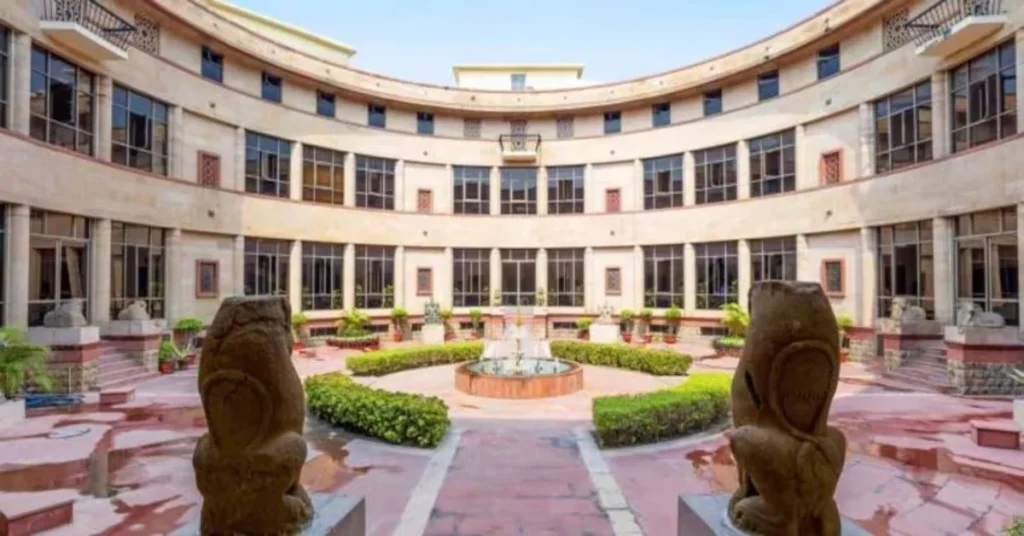
Ancient Sculptures
You will find yourself captivated by the stunning ancient sculptures on display. Each piece represents the artistry and creativity of past civilizations, showcasing intricate details and craftsmanship that have stood the test of time.
Historical Manuscripts
One of the museum’s highlights is its collection of historical manuscripts. These rare texts offer a glimpse into India’s literary heritage, featuring ancient philosophies, religious texts, and cultural documentation.
Ancient manuscripts serve as a repository of knowledge, preserving important historical events and cultural narratives. The National Museum possesses manuscripts written in several languages, including Sanskrit, Persian, and Arabic. Some of these texts are incredibly fragile, making them not only invaluable but also dangerous to handle without proper care. By viewing these manuscripts, you gain insight into India’s rich intellectual history and the positive role literature played in shaping society.
Gandhi Smriti
Gandhi Smriti, formerly known as Birla House, serves as a poignant museum and memorial dedicated to the life of Mahatma Gandhi, the father of the nation. Located at the significant site where Gandhi was assassinated on January 30, 1948, this institution stands not only as a tribute but also as a repository of history that encapsulates the essence of his philosophy and struggle for independence. The museum provides an intimate glimpse into Gandhi’s life through the carefully curated artifacts that include personal belongings, letters, photographs, and various memorabilia.
The collection at Gandhi Smriti offers visitors a unique opportunity to connect with the past. Among the artifacts, one can find the iconic spectacles worn by Gandhi and his wooden sandals, which reflect his simple lifestyle and profound ideology of non-violence and self-sufficiency. Additionally, the museum houses numerous letters that reveal his thoughts on governance, spirituality, and social justice. Each item tells a story, connecting the visitor to the legacy of a man whose principles continue to influence social movements worldwide.
The historical context of Gandhi Smriti enhances its significance. Numerous guided tours and educational programs are conducted, making it an important site for scholars, students, and anyone interested in understanding the impact of Gandhi’s life. The peaceful gardens surrounding the memorial add to the reflective nature of the visit, inviting contemplation on his unwavering commitment to truth and non-violence. In essence, Gandhi Smriti is more than just a museum; it is a symbol of the enduring spirit of an icon whose vision remains relevant in contemporary discussions surrounding peace and justice.
There’s a profound resonance at Gandhi Smriti, where India’s beloved leader, Mahatma Gandhi, spent his last moments. This museum is not just a tribute but a detailed reflection of his life, teachings, and the pivotal role he played in the freedom struggle of India. As you walk through its halls, you’ll encounter numerous artifacts, personal belongings, and photographs that depict the spirit of Gandhi’s non-violent philosophy.
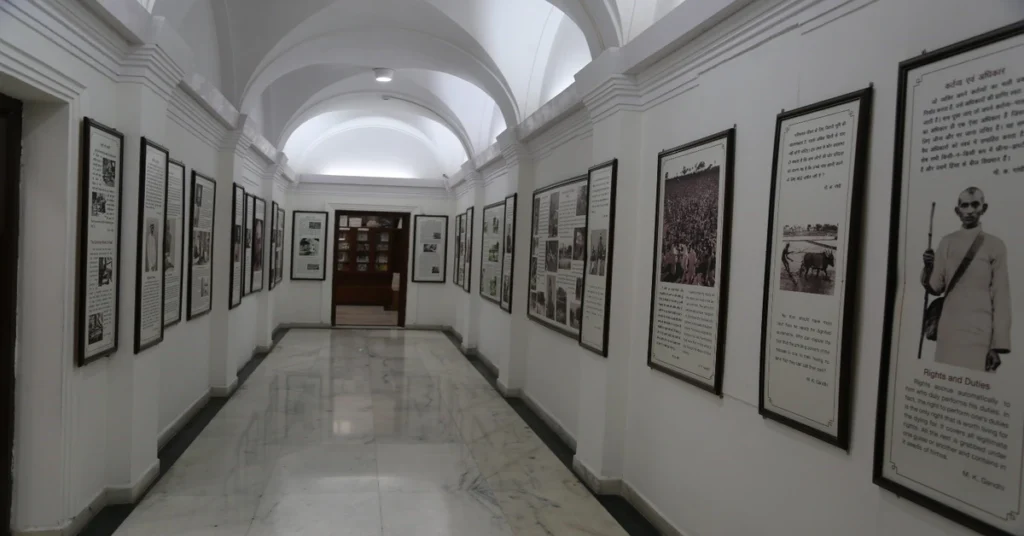
Personal belongings
Belongings such as his iconic round spectacles, walking stick, and the simple wooden charkha are displayed here, emphasizing his humble lifestyle. These artifacts offer a glimpse into the daily life of Gandhi, portraying a man who lived with minimal possessions while carrying immense wisdom.
Photographic archives
Assuming you have a keen interest in history and photography, the photographic archives here will undoubtedly captivate you. These images chronicle the life of Gandhi, his revolutionary journey, and the historic moments he witnessed, providing a visual narrative of a transformative era in India’s history.
You can sift through an extensive collection of rare photographs, featuring pivotal events like the Salt March, and images of key figures from the freedom movement. Each photograph is not just a piece of history, but a window into the past that helps you connect with the struggles, triumphs, and sacrifices that shaped modern India. Here, you will feel the weight of history as you explore the personal stories behind these photographs, making your visit an enlightening experience.
National Gallery of Modern Art
The National Gallery of Modern Art (NGMA) in Delhi is a premier institution dedicated to modern and contemporary Indian art. Established in 1954, it houses an expansive collection of artworks that encapsulate the evolution of Indian art from the late 19th century to the present day. Located conveniently near India Gate, the gallery serves as a vital cultural hub, attracting art enthusiasts, scholars, and tourists alike.
Visitors to NGMA will encounter works by both renowned and emerging artists, showcasing the rich tapestry of Indian modernism. Notable figures such as Rabindranath Tagore, Jamini Roy, and FN Souza have their masterpieces prominently displayed. The gallery also features works by contemporary artists who explore and challenge traditional artistic boundaries, thus contributing to the ongoing dialogue of Indian art. This blend of historical and contemporary pieces reinforces the significance of the gallery in promoting the diverse spectrum of Indian creativity.
One of the key features of the National Gallery of Modern Art is its commitment to fostering art appreciation and education. It hosts various exhibitions, workshops, and lectures, inviting visitors to engage with the dynamic world of modern art. Among the must-see exhibits is the permanent collection, which presents a curated selection of paintings, sculptures, and photographs that illustrate the evolution of artistic expression in India. Additionally, temporary exhibitions often provide insights into specific themes or movements, further enriching the visitor experience.
In conclusion, the National Gallery of Modern Art stands as a cornerstone of Delhi’s cultural landscape, offering a comprehensive look at modern and contemporary Indian art. Its efforts in promoting art appreciation make it an essential destination for anyone seeking to understand the nuances of Indian culture and creativity through the lens of art.
All art enthusiasts must visit the National Gallery of Modern Art (NGMA), where a beautiful collection captures the essence of Indian creativity from the 19th century to the present day. This institution not only showcases a variety of artworks but also serves as a cultural hub for discussions and exhibitions that take place throughout the year.
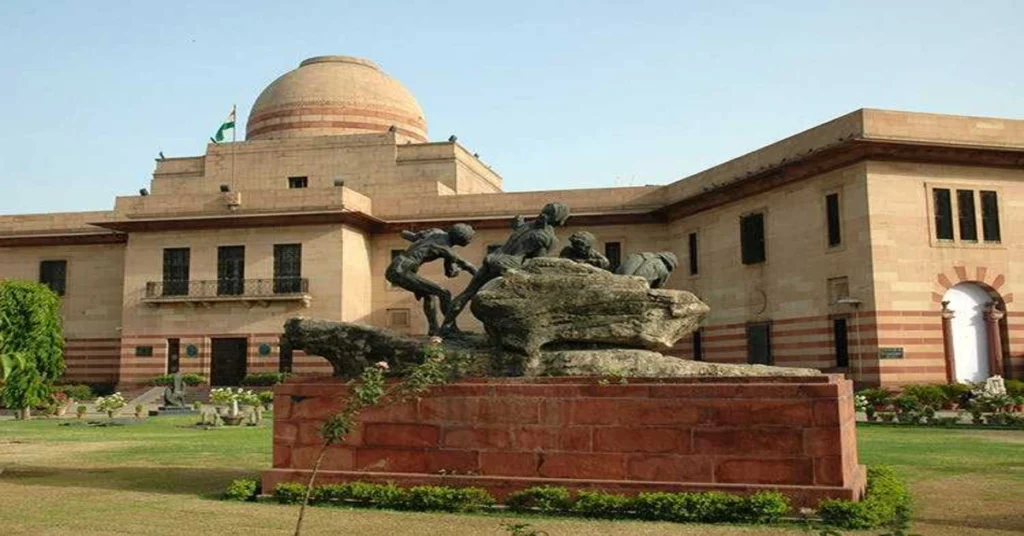
Modern Paintings
With a stunning collection of over 14,000 artworks, the NGMA proudly displays modern paintings by renowned Indian artists such as Raja Ravi Varma, Amrita Sher-Gil, and Jamini Roy. You will admire the transformative journey of Indian art as it shifts from traditional to contemporary themes.
Contemporary Installations
While you explore the gallery, you will encounter contemporary installations that provoke thought and challenge conventional perspectives. The NGMA is committed to showcasing works that reflect current social issues, environmental challenges, and technological advancements.
Any visit to the NGMA is incomplete without appreciating its dynamic contemporary installations, which engage your senses and spark critical thinking. These installations often incorporate mixed media, enabling artists to express their feelings about our rapidly changing world. Many installations present risks, showcasing the fragility of our environment and the dangerous realities of modern life. You can find works by both established and emerging artists, highlighting the innovation that defines contemporary art. Your journey through these spaces will provide you with a profound understanding of the artist’s message and solidify your appreciation for modern artistic expressions.
Indira Gandhi Memorial Museum
The Indira Gandhi Memorial Museum, located in the former residence of India’s first and only female Prime Minister, serves as a poignant tribute to her life and legacy. The museum is housed in the historical setting of 1, Safdarjung Road, where Indira Gandhi lived from 1966 until her assassination in 1984. Its design and curation aim to encapsulate the multifaceted experiences of a leader who shaped the nation in significant ways.
Visitors to the museum will find a vast array of artifacts that offer insight into Indira Gandhi’s political journey and personal life. Among the exhibits are her personal belongings, including clothing, letters, and personal photographs that capture her evolution as a leader and a mother. These items provide a unique glimpse into her daily life and the challenges she faced during pivotal moments in Indian history.
Notably, the museum also showcases various mementos from significant events during her tenure, such as peace efforts and crucial political decisions. Artifacts like awards and gifts from foreign dignitaries reflect her influence on international relations, further solidifying her legacy as a formidable figure in global politics. Additionally, multimedia presentations allow visitors to engage more deeply with her story, enhancing the overall experience.
The museum not only preserves an important part of Indian history but also serves as an educational space that draws researchers, students, and general tourists alike. It successfully engages visitors through thoughtful curation and interactive exhibits. For anyone looking to understand India’s political landscape, the Indira Gandhi Memorial Museum stands out as a significant site that encapsulates the enduring impact of one of India’s most remarkable leaders.
Your journey through the Indira Gandhi Memorial Museum offers a profound glimpse into the life of India’s first female Prime Minister. This museum, housed in her former residence, showcases a rich tapestry of her experiences, revealing her resilience and commitment to the nation. Walking through the various sections, you will encounter unique artifacts that speak volumes of her contribution to India’s political landscape.
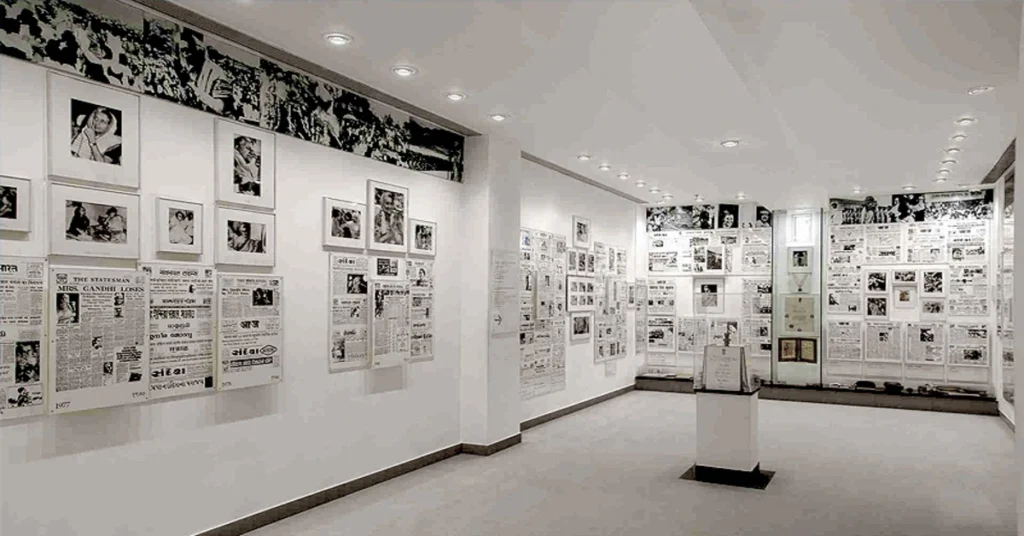
Personal mementos
On display are personal mementos that belonged to Indira Gandhi, including her jewelry, books, and gifts from world leaders. These items provide insight into her life beyond politics, illustrating her tastes and values. The intimate feel of these artifacts connects you with her personal journey and the legacy she left behind.
Photographs of events
Museum exhibits are abundant with captivating photographs of events that shaped not only her life but also the history of India. These images capture crucial moments, such as rallies, state visits, and candid family interactions, allowing you to witness the moments that defined her leadership.
With the photographs, you will find pivotal events such as Indira Gandhi’s impactful speeches and her interactions with other global leaders. Each picture tells a story, providing context to her decisions during critical times in Indian history. As you examine these images, consider the tumultuous nature of the period and how her policies influenced the country’s direction, making this museum an vital stop for anyone interested in understanding India’s past.
National Museum of Natural History
Unlike other Museums in Delhi where art takes center stage, the National Museum of Natural History offers a unique glimpse into the planet’s rich biodiversity and history. This institution is dedicated to showcasing the wonders of nature, allowing you to discover the intricate relationships among organisms and their environments.
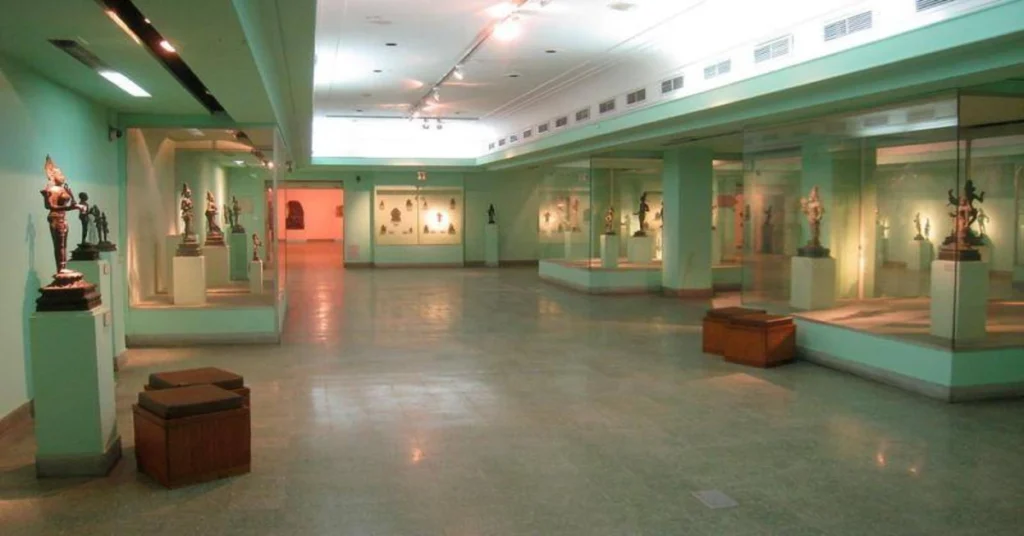
Fossils
Little do many know that the museum houses an impressive collection of fossils, showcasing the evolutionary journey of life on Earth. You can explore specimens of ancient creatures, including dinosaurs, which give you a rare window into a time long past, making it a must-visit for paleontology enthusiasts.
Wildlife exhibits
There’s a fascinating array of wildlife exhibits that affirm the breathtaking diversity of flora and fauna. Each exhibit presents a chance for you to engage with the natural world through intricate models and life-like displays, providing an educational experience that can spark your curiosity about conservation and biodiversity.
To truly appreciate the exhibits, you should pay attention to the interactive displays that allow you to learn about endangered species and their ecosystems. The museum highlights both the threats to wildlife and the efforts being made for their preservation, enabling you to understand the urgent need for conservation. You’ll come away with a newfound respect for nature and the vital roles each species plays in maintaining balance in our world.
Archaeological Museum, Red Fort, Museums in Delhi
The Archaeological Museum located within the iconic Red Fort in Delhi serves as a significant repository of India’s rich cultural heritage. The Red Fort, a UNESCO World Heritage site, was constructed in the 17th century under the rule of Mughal Emperor Shah Jahan. It stands as a testament to the grandeur of the Mughal architectural style and the historical narrative of India’s imperial past. Situated amidst the bastions of the fort, the museum not only enriches the visitor experience but also offers a comprehensive view of the country’s ancient artifacts.
The Museums in Delhi houses an impressive collection of artifacts that span several centuries, providing invaluable insights into Indian art and culture. Among its notable exhibits are ancient coins, pottery, sculptures, and textiles, which showcase the artistic skills of various historical periods. Each artifact is meticulously curated to highlight its historical significance, offering visitors a glimpse into the everyday lives, religious practices, and artistic expressions of people throughout Indian history.
One of the most noteworthy displays includes the collection of terracotta artifacts, which date back to the prehistoric period. These artifacts, alongside the intricately crafted bronze and stone sculptures, emphasize the technical prowess and creative innovation of ancient Indian artisans. Furthermore, the museum also features manuscripts and lithographs that offer narratives about India’s social and political evolution over the centuries.
For those interested in learning about India’s imperial past, the Archaeological Museum at the Red Fort serves as an essential starting point. The exhibits not only enhance understanding of the country’s diverse history but also foster appreciation for the artistic legacy that continues to influence modern India. A visit to this museum is a journey through time, showcasing the rich tapestry of civilization that has shaped the nation.
Despite its relatively compact size, the Archaeological Museum in Delhi, Museums in Delhi houses a stunning collection of artifacts that narrate the rich history of the Indian subcontinent. This museum serves as a portal to ancient times, showcasing a variety of exhibits that highlight the evolution of civilization in this region. With its well-curated displays, it promises an enriching experience for history enthusiasts and casual visitors alike.

Excavated artifacts
Any visit to the Archaeological Museum will immerse you in a vast array of excavated artifacts from various archaeological sites across India. These artifacts span several millennia and include pottery, tools, and even ancient inscriptions, each telling a story of human innovation and cultural development.
Historical relics
Even more fascinating are the historical relics that you will encounter, some of which date back to the Indus Valley Civilization. Walking through the museum, you’ll see exquisite sculptures and decorative items that offer insights into the daily lives, beliefs, and artistry of ancient peoples.
With treasures such as intricately carved idols and significant inscriptions, the historical relics at the Archaeological Museum provide a window into the spiritual and social dynamics of past civilizations. You’ll find that these items not only have aesthetic value but also serve as crucial evidence of the ingenuity and complexity of earlier societies. Engage with the narratives behind these relics to deepen your understanding of India’s rich heritage.
National Rail Museum, Museums in Delhi
After exploring the vibrant culture and history of Delhi, a visit to the National Rail Museum is a must for any history enthusiast. This remarkable museum showcases India’s illustrious railway history and transports you through time, allowing you to appreciate the evolution of railways and their pivotal role in the country’s development.
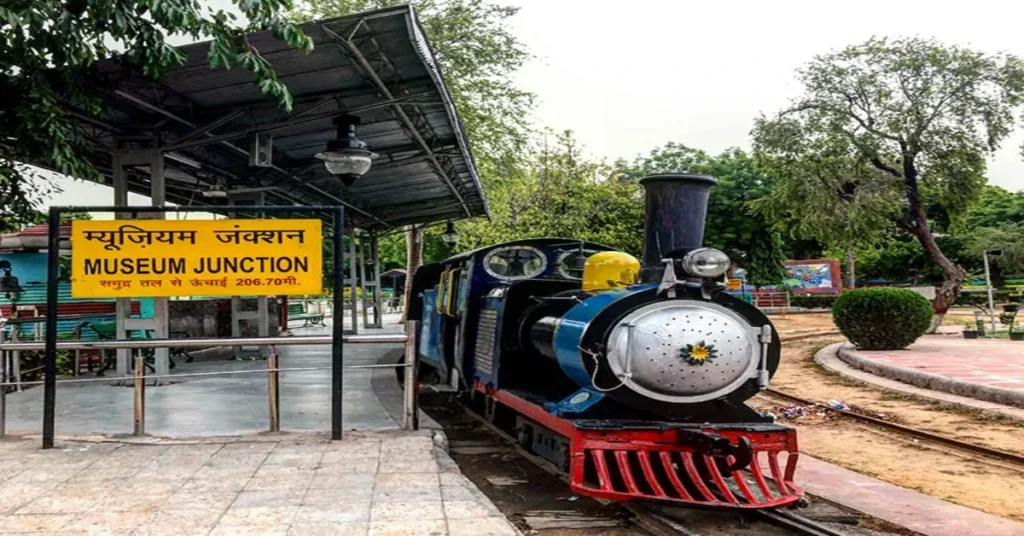
Vintage locomotives, Museums in Delhi
Some of the most iconic vintage locomotives can be found within the expansive grounds of the National Rail Museum. These magnificent steam engines, beautifully preserved, offer a glimpse into the engineering marvels of the past. As you explore, you can marvel at their intricate designs and imagine the adventures they undertook across the vast Indian landscape.
Railway memorabilia, Museums in Delhi
You will be delighted to discover a treasure trove of railway memorabilia at the museum, featuring artifacts that span over a century of rail history. This collection includes everything from distinctive uniforms worn by railway personnel to rare vintage tickets and timepieces, all of which narrate compelling tales of the railway’s impact on society.
To deepen your understanding of Indian rail history, take time to admire the extensive array of railway memorabilia on display. You’ll find unique pieces like old gauges, signal apparatus, and historic photographs that depict the evolution of rail travel. Each artifact serves as a remarkable reminder of the engineering innovations and the dedication of countless workers that have shaped the Indian railway system you appreciate today.
Shankar’s International Dolls Museum, Museums in Delhi
Located in the vibrant heart of Delhi, Shankar’s International Dolls Museum stands as a remarkable establishment dedicated to the art of doll making and cultural representation. Established in 1965 by late K. Shankar Pillai, this museum houses one of the largest collections of dolls in the world, with over 8,000 intricately crafted dolls from more than 85 countries. The collection is not merely a showcase of playthings but a visual narrative of cultural diversity, reflecting the intricate traditions and customs from various parts of the globe.
The museum features dolls representative of traditional costumes, folk art, and daily life, each telling its unique story through the craftsmanship and design. Noteworthy among the collections are dolls dressed in regional attire, showcasing the rich heritage of countries like Japan, Spain, and India, making it an insightful experience for visitors of all ages. There is also an impressive collection of puppets and effigies, adding another layer of cultural appreciation and entertainment to the museum experience.
In addition to its vast collection, the museum engages families and children through various interactive activities designed to make learning fun. Educational workshops and storytelling sessions involving the dolls are often conducted, encouraging young minds to explore creativity through cultural immersion. The museum serves as a perfect destination for families looking to combine entertainment with education, allowing children to appreciate the art form and its cultural significance.
Shankar’s International Dolls Museum not only preserves the art of doll making but also fosters an understanding of world cultures. The enchanting environment, coupled with a rich array of artifacts, creates an experience that is both enjoyable and enlightening, making it an essential stop on any cultural tour of Delhi.
To wander through Shankar’s International Dolls Museum, Museums in Delhi is to initiate on a journey across the globe, experiencing cultures through their stunning dolls. This museum, founded by the renowned cartoonist K. Shankar Pillai, showcases more than 6,500 dolls representing various countries and their traditional attire, making it a must-visit for both children and adults. Each doll tells a story, and as you explore, you will appreciate the craftsmanship and artistry that goes into each unique piece.

Cultural dolls, Museums in Delhi
International dolls fill the museum, reflecting the diverse traditions and heritage of different cultures. From the vibrant costumes of Indian folk dolls to the delicate designs of European figurines, you will find yourself immersed in a world where cultural stories come alive. This collection not only serves as a visual delight but also as an educational resource, educating you on the significance of dolls in various societies.
Unique collections
While exploring the Unique collections, you will discover not just different dolls but also a fascinating assortment of materials and designs that define each region. The museum offers a rare glimpse into how societal norms and cultural values have influenced doll-making across decades.
Dolls created from materials like wood, cloth, and even ceramics demonstrate the local craftsmanship unique to each culture. You’ll encounter influences ranging from historical events to modern-day fashion, enriching your understanding of global art. The museum’s dedication to preserving these collections allows you to appreciate these remarkable pieces as vital links to their respective histories.
Craft Museum, Museums in Delhi
Once again, the Craft Museum in Delhi stands out as a treasure trove of India’s diverse heritage. This museum is dedicated to preserving and showcasing traditional craftsmanship, offering you an insightful glimpse into the artistry and labor that go into making India’s invaluable crafts. With a host of exhibits and collections, you can truly appreciate the *rich textures and intricate designs* that represent the spirit of Indian artistry.
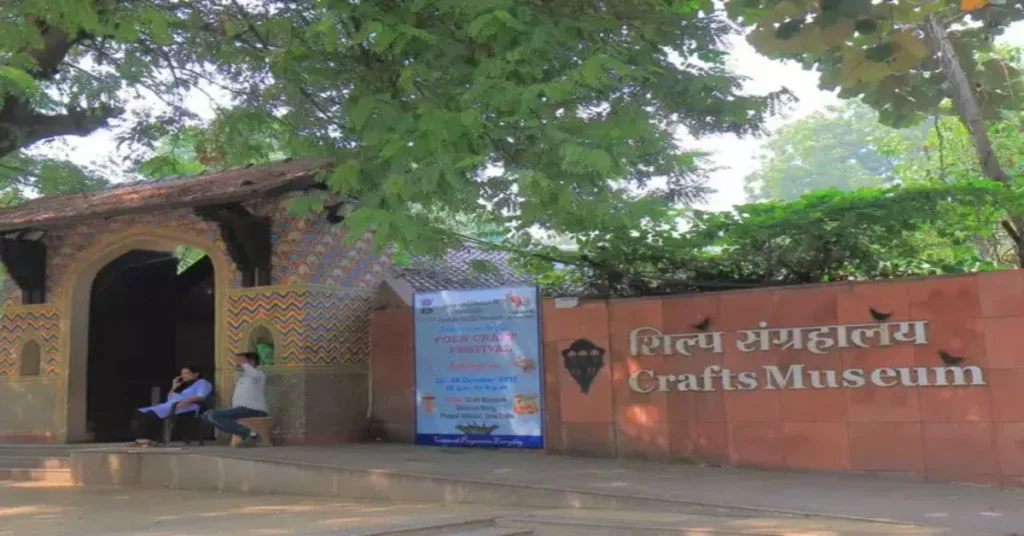
Traditional crafts, Museums in Delhi
For those intrigued by the nuances of *traditional crafts*, the museum serves as a perfect platform to explore various handicrafts across different states of India. You will encounter vibrant textiles, exquisite pottery, and beautifully woven baskets, all of which encapsulate *age-old techniques* passed down through generations.
Artisanal artifacts, Museums in Delhi
Crafts display a range of *artisanal artifacts* that highlight the intricate skill and creativity of Indian artisans. The museum showcases not just finished products but also the tools and materials used in the crafting process, offering valuable insight into *the artisanal methods* that make these items unique.
Traditional craftsmanship is important in showcasing *the artistic brilliance* and cultural heritage of India. This section of the museum emphasizes the painstaking efforts involved in crafting each piece, ensuring that you understand the *importance of preserving these artisan traditions*. When you explore these artifacts, you’re not just witnessing beauty; you’re participating in a narrative that ties together craftsmanship, culture, and history in a *contemporary context*. You will leave with a deeper appreciation for the *craftspeople’s skills*, which embody the heart and soul of India’s rich artistic legacy.
National Philatelic Museum
The National Philatelic Museum, situated in the heart of Delhi, serves as a dedicated establishment celebrating the art and science of philately in the list of Museums in Delhi. This museum stands out due to its exclusive collection of stamps, documenting the evolution of postage in India, which traces back to the 19th century. Established in 2005, it aims to promote the understanding and appreciation of postage stamps as collectibles that encapsulate both historical and cultural narratives.
One of the noteworthy aspects of the Museums in Delhi is its impressive assortment of rare stamps, some of which can be dated back to the pre-independence era. Visitors can marvel at the first postage stamp of India, the ‘Scinde Dawk,’ issued in 1852, alongside other significant pieces from different periods. The museum showcases stamps that highlight various themes such as flora, fauna, historical figures, and momentous events in Indian history. This rich display not only appeals to philatelists but also educates the broader audience about the historical significance of postal services and the stories encapsulated within these tiny pieces of paper.
Philately, the hobby of collecting and studying stamps, holds immense importance of Museums in Delhi as it goes beyond mere collection; it serves as a historical record that allows enthusiasts to explore the narratives encapsulated within each stamp. The National Philatelic Museum thus plays a crucial role in fostering interest in philately, inviting individuals of all ages to engage with this fascinating pursuit. By examining stamps, collectors and visitors alike gain insights into the socio-economic and cultural fabric of the times in which they were produced. The museum, through its exhibits, not only honors the history of postage in India but also encourages new generations to develop an interest in this unique hobby.
Many visitors to Museums in Delhi marvel at the fascinating world of postage stamps at the National Philatelic Museum. This unique establishment is dedicated to the collection and display of stamps, unveiling the rich heritage of India’s postal services and the artistry that accompanies it. It serves not just as a repository of stamps but as a vibrant hub for stamp enthusiasts and the curious alike, showcasing items that tell powerful stories about our history and culture.
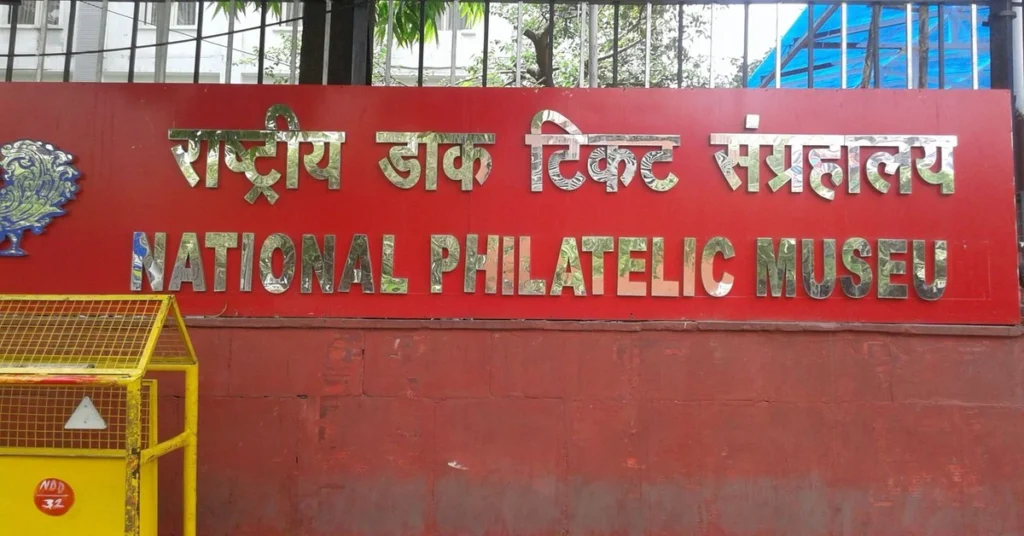
Stamp Collections
You will find an extensive range of stamp collections at the National Philatelic Museum, showcasing rare stamps from various periods and regions. Each stamp is a testament to the artistry and intricacies of India’s postal system, featuring themes that include wildlife, history, and significant national achievements. These collections are not merely visual treats; they serve as educational tools, illustrating the evolution of postal communication over the years.
Postal History
Little do many realize that the story of India’s postal history is one of innovation and transformation. The museum offers a detailed exploration of how postal services evolved from ancient times to the present day, highlighting the significant milestones that marked these changes.
Stamp collecting is more than just a hobby; it is a peek into the past, full of intriguing developments and cultural exchanges. You can explore artifacts such as old mail delivery systems, postal stamps from pre-independence India, and detailed documentation of how communication shapes society. The museum’s exhibits emphasize not only the aesthetic value of stamps but also their significance in connecting people and cultures across time. Your visit will enrich your understanding of India’s postal narrative and ignite a passion for philately.
National Air Force Museum
The National Air Force Museum in Dwarka, Delhi, is a must-visit for aviation enthusiasts and history buffs. This museum showcases the rich history and heritage of the Indian Air Force, offering a fascinating glimpse into its evolution and contributions to the nation’s defense.
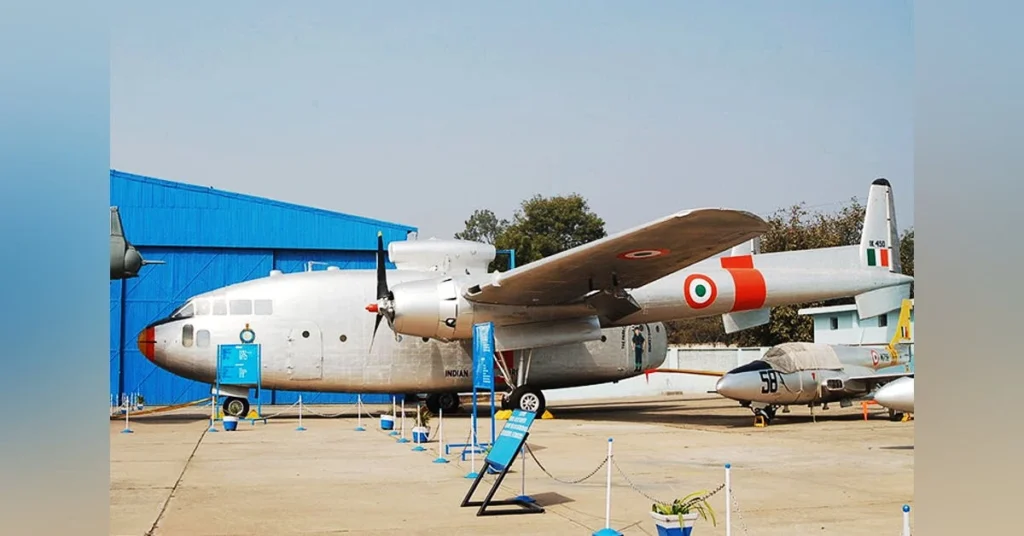
Best Time to Visit:
The museum is open from Tuesday to Sunday, except for national holidays. The ideal time to visit is during the cooler months of October to February when the weather is pleasant and comfortable. Avoid visiting during peak tourist season (November to January) as it can get crowded.
Interesting Facts:
- Extensive Collection: The museum houses a vast collection of aircraft, including vintage planes, helicopters, and fighter jets, many of which have played crucial roles in India’s military history.
- Interactive Exhibits: Visitors can explore interactive exhibits that provide detailed information about the history, operations, and technology of the Indian Air Force.
- War Memorial: The museum also features a war memorial dedicated to the brave soldiers who have sacrificed their lives in the service of their country.
- Guided Tours: Guided tours are available to provide visitors with a deeper understanding of the museum’s exhibits and the history of the Indian Air Force.
- Children’s Section: The museum has a dedicated children’s section with interactive displays and activities to engage young minds.
Highlights:
- The vintage Avro Anson aircraft, one of the earliest types operated by the Indian Air Force.
- The MiG-21, a renowned fighter jet that has served in the Indian Air Force for decades.
- The Sukhoi Su-30MKI, a modern multirole fighter jet that is a key part of India’s air defense capabilities.
- The HAL Cheetah and HAL Dhruv helicopters, which have been widely used for various military and civilian purposes.
A visit to the National Air Force Museum in Dwarka is a rewarding experience that offers a unique opportunity to learn about the history, evolution, and achievements of the Indian Air Force.
Raj Ghat: Memorial of Mahatma Gandhi
Raj Ghat serves as a revered memorial dedicated to Mahatma Gandhi, the pivotal figure in India’s struggle for independence. Located on the banks of the Yamuna River, this memorial not only commemorates Gandhi’s life but also represents the enduring values he stood for, such as peace, non-violence, and tolerance. The simplicity of its design echoes Gandhi’s own beliefs, making it a poignant reminder of his legacy. As visitors approach the memorial, they are greeted by a serene atmosphere where nature and architecture converge, allowing for reflection and introspection.
Surrounding the black marble platform that marks Gandhi’s last resting place, visitors will find lush gardens, symbolizing the purity and tranquility that Gandhi advocated. The serene environment encourages guests to meditate and pay their respects to a leader who inspired millions both in India and across the globe. Each element within the grounds of Raj Ghat has been meticulously curated to honor Gandhi’s memory, reinforcing its status as an essential site for understanding India’s cultural heritage.
The memorial is further enriched by the presence of various monuments dedicated to other notable freedom fighters and Indian leaders, each reflecting the country’s rich history and the values Gandhi championed. Additionally, the intangible heritage embodied by Raj Ghat is profound; it represents the collective memory of a nation that continues to draw upon Gandhi’s teachings in contemporary discussions around peace and social justice. The site attracts numerous tourists, scholars, and citizens alike, each seeking to understand the depth of Gandhi’s influence on Indian society.
Conclusion: Embracing Delhi’s Artistic and Cultural Legacy
Visiting museums in Delhi offers an unparalleled opportunity to delve into the rich tapestry of the city’s history, culture, and artistry. Each museum serves as a repository of artifacts that tell the stories of various eras and communities, allowing visitors to gain insights into Delhi’s dynamic past. From ancient relics to contemporary art, these institutions showcase the evolution of the capital while preserving its diverse heritage.
The Museums in Delhi highlighted in this blog post exemplify Delhi’s commitment to art and history. They house collections that range from exquisite sculptures and paintings to historical documents and everyday objects that define the human experience. By exploring these institutions, visitors not only appreciate the artifacts on display but also foster a deeper understanding of the artistic and cultural expressions that have shaped Delhi over centuries.
Furthermore, engaging with Museums in Delhi allows one to appreciate the painstaking efforts of curators and historians dedicated to preserving these treasures. These professionals work diligently to curate exhibitions that reflect both local and global narratives, ensuring that the significance of Delhi’s heritage is accessible to all. In doing so, they invite a broader audience to explore, learn, and reflect on the shared human journey encapsulated within these walls.
In conclusion, immersing oneself in the Museums in Delhi is essential for anyone looking to comprehend the city’s artistic and cultural legacy fully. These visits not only enrich personal knowledge but also contribute to a broader appreciation of heritage that spans generations. As you plan your endeavors in Delhi, it is highly encouraged to include these Museums in Delhi in your itinerary, as they represent gateways to understanding the intricate relationships between history, society, and art.
To Wrap Up
On the whole, exploring the top 10 museums with artifacts in Delhi offers you a profound insight into India’s rich heritage and diverse culture. Each museum presents unique collections that enrich your understanding of history and art. By visiting these esteemed institutions, you can immerse yourself in the stories that shape your nation’s identity and appreciate the craftsmanship of bygone eras. Whether you are a history buff or an art lover, these museums promise to enhance your cultural experience in the vibrant capital city of India.
FAQ about Top 10 Museums in Delhi
Q: What are the top Museums in Delhi that showcase artifacts?
A: The top museums in Delhi featuring important artifacts include the National Museum, the National Gallery of Modern Art, the Indira Gandhi Memorial Museum, the Gandhi Smriti, the National Rail Museum, the Delhi Police Museum, the Archaeological Museum, the Children’s Museum, the Arts and Crafts Museum at Dilli Haat, and the Vedic Heritage Museum. Each museum offers a unique perspective on history, art, and culture through their collections.
Q: What types of artifacts can be found in the National Museum of India?
A: The National Museum of India houses a vast range of artifacts, including ancient sculptures, coins, textiles, pottery, and manuscripts. The museum’s collection spans over 5,000 years of Indian history, featuring artifacts from various periods such as the Indus Valley Civilization, Maurya and Gupta Empires, and more contemporary pieces, making it a comprehensive hub for cultural heritage.
Q: Are there any historical artifacts related to India’s independence in these Museums in Delhi?
A: Yes, several museums in Delhi exhibit artifacts related to India’s struggle for independence. The Indira Gandhi Memorial Museum showcases personal artifacts of the former Prime Minister, including items related to her political career. Similarly, Gandhi Smriti features significant artifacts related to Mahatma Gandhi’s life and the events leading up to India’s independence, such as his personal belongings and photographs.
Q: Is the National Gallery of Modern Art focused solely on contemporary art?
A: The National Gallery of Modern Art primarily focuses on modern and contemporary Indian art. However, it also features a collection that includes works from earlier periods, showcasing the evolution of art in India. The museum hosts numerous exhibitions and supports various art initiatives to promote modern art and artists within the country.
Q: How can I plan a visit to these museums in Delhi, and is there an entry fee?
A: Most museums in Delhi are open to the public and have specific visiting hours, typically from 10 AM to 5 PM. Entry fees vary, with many Museums in Delhi offering free admission on certain days. It’s advisable to check the individual museum websites or contact them directly for the latest information on entry fees, special exhibitions, and any COVID-19 guidelines to ensure a smooth visit.


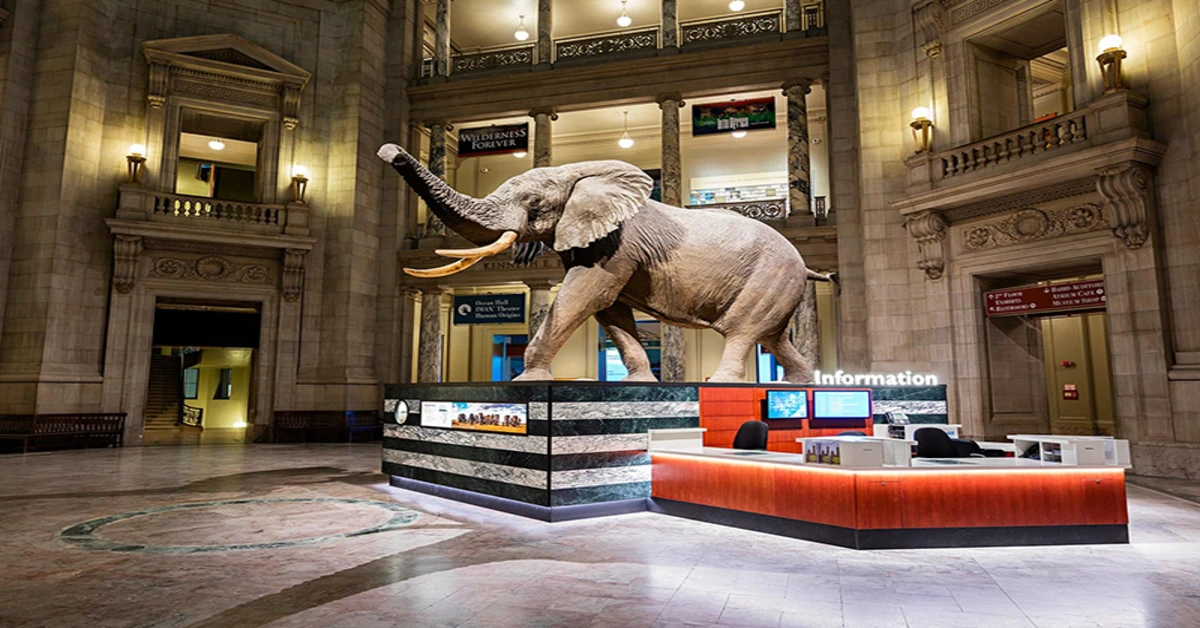
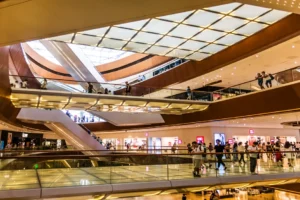
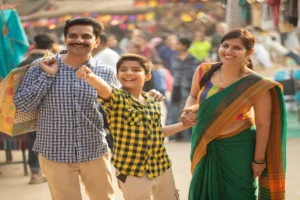

Thank you for the thorough breakdown, much appreciated.